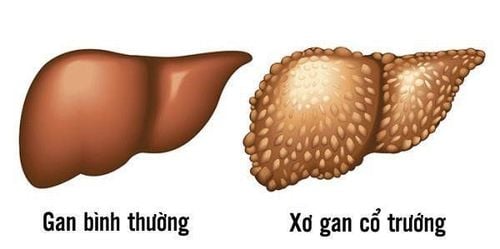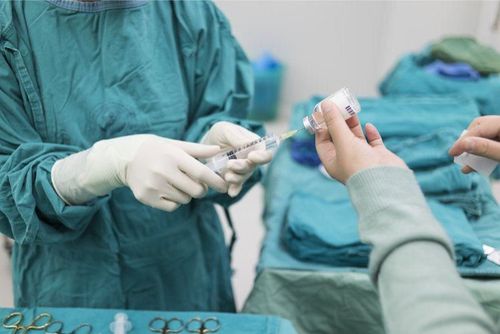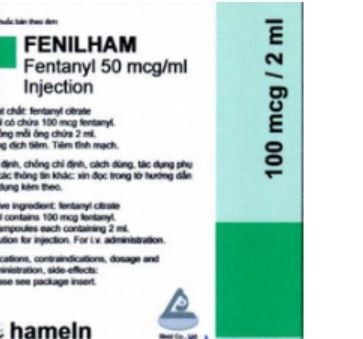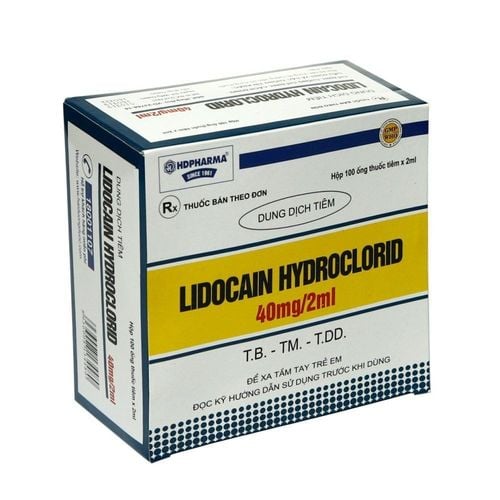This is an automatically translated article.
The article was professionally consulted by Specialist Doctor II To Van Thai - Emergency Medicine Doctor - Emergency Resuscitation Department - Vinmec Hai Phong International General Hospital. Thai doctor has more than 34 years of experience in the field of anesthesia - emergency resuscitation.Congenital urethrovaginal fistula is a very rare malformation and one of the abnormalities of the urogenital sinus. In these cases, the patient will be indicated by the doctor for urethral fistula surgery.
1. When is surgery indicated for urethral fistula?
Congenital urethral-vaginal fistula is a very rare malformation, the manifestation of congenital urethral fistula is weak urine stream and partial leakage of urine into the vagina.
Indications for urethral fistula surgery: When the patient is examined, it is concluded that there is a congenital urethral fistula or a urethral fistula due to other causes.
Contraindications: Patients with urinary tract infections will not be operated on, but need to be cured before surgery.
2. Combined spinal anesthesia - epidural What is congenital urethral-vaginal fistula surgery?
Combined spinal - epidural anesthesia for congenital urethral-vaginal fistula surgery is a regional anesthetic technique performed by injecting local anesthetic into the subarachnoid and epidural spaces to temporarily inhibit conduction. segmented nerves through nerve roots to satisfy the need for anesthesia for surgery and pain relief.3. Procedure for performing congenital urethral fistula surgery
3.1 Performer To perform congenital urethral fistula surgery, it is necessary to have a main surgeon and an assistant doctor, an anesthesiologist, and a nurse to assist. Estimated time of surgery for congenital urethral fistula: 120 minutes. The patient will be performed anesthesia method with spinal - epidural combination in congenital urethral-vaginal fistula surgery. If anesthesia fails, another method of anesthesia must be changed: general anesthesia. 3.2 Patients Before surgery, the patient had a chance to see the doctor and heard and explained clearly before surgery about the disease and general condition, about the possibilities of surgery to be performed, about the complications and complications. , sequelae may be encountered due to disease, surgery, anesthesia, anesthesia, and pain relief. The patient has been evaluated for general health to ensure safety for surgery, is treated stably for medical diseases such as high blood pressure, diabetes, ... if the patient has a disease before surgical intervention ( except for emergency surgery). Blood transfusion if the patient has anemia. Must fast, do enemas, clean the surgical area and the whole body. Use prophylactic antibiotics before surgery. The patient was examined by an anesthesiologist the day before surgery.
Patient position during spinal - epidural anesthesia: There are usually 2 positions:
Sitting position: Patient sits with back arched, head bowed, chin resting on chest, legs stretched on the operating table or feet placed on chair. Lying position: The patient lies on his side with his back bent, knees pressed to the abdomen, chin pressed to the chest. The leaning position is safer than the sitting position because it avoids postural hypotension. 3.4 Anesthesia and anesthetic equipment and supplies Means and equipment
Syringes and needles of all sizes, gloves, sterile gauze, pince, antiseptic alcohol, sterile hole towels... Epidural kit and spinal needle; Combined spinal-epidural anesthesia kit. Anesthesia: One-time epidural-spinal anesthesia (needle-in-needle) Steps
Anesthesiologist wears a hat, mask, washes hands, wears a gown, wears sterile gloves, disinfects the puncture site , a sterile perforated sheet. Perform local anesthetic technique at the puncture site with 1-2% lidocaine. Epidural anesthesia is performed in the midline (puncture between the 2 vertebrae, usually L4-L5, L3-L4 or lateral line (1-2cm midline puncture, insert the needle into the midline, up toward the inward). interstitial space L4-L5, L3-L4) Evaluate the needle for correct position with loss of resistance and no reflux of cerebrospinal fluid and blood The next step is to insert a 27G spinal needle into the Tuohy needle for until there is a feeling of puncture through the dura, check for cerebrospinal fluid spillage. Perform spinal needle fixation, inject drugs into the subarachnoid space and then withdraw the needle Insert the catheter into the epidural space from 3-6cm and Fixed catheter with sterile bandage Continuous infusion: bupivacaine 0.125-0.25%, run rate 4-6ml/hour; ropivacaine 0.125-0.25% 4-10ml/hour; levobupivacaine 0.125-0.25 % 4-10ml/hr Combination drugs: morphine 10-20mcg/ml; fentanyl 1-2mcg/ml; sufentanil 0.5mcg/ml 3.5 Urethral fistula surgery Disinfect the lower abdomen, vagina and floor Vagina vaginal opening and vaginal urethral fistula out skin. Place a urethral catheter. Place the valve behind the vagina. Fistula surgery. Inject lidocaine solution + 0.9% saline serum + adrenaline 1:200,000 into the submucosa of the vaginal wall. Incision around the circumference of the fistula in the vaginal wall. Separation of vaginal wall from fistula and urethral wall. Fistula resection closes the fistula in the urethral wall with the slow criterion 4.0 Close the vaginal wall. Place the betadine-impregnated sesame paste vaginally. End of urethral fistula surgery. After performing urethral fistula surgery, the patient was taken to the recovery room for further monitoring. Some complications may occur after surgery for congenital urethral fistula such as:
Infection of the incision: The incision is red, with pus, perineal hematoma. Dysuria: After the catheter is removed, the patient has difficulty urinating or is unable to urinate. When there are signs of infection: The patient needs to be changed, and a vaginal betadine-impregnated gauze is placed. If you have difficulty urinating, urinary retention: Need to reinsert the urethral catheter, keep the catheter in place for 3 days.

Please dial HOTLINE for more information or register for an appointment HERE. Download MyVinmec app to make appointments faster and to manage your bookings easily.
SEE MOREUrethral-vaginal fistula surgery: What you need to know How to close urethral fistulas? Surgery to cut - connect the urethra














